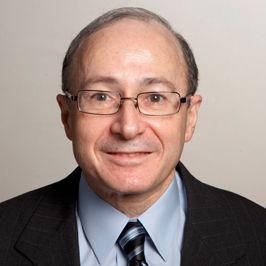Article
Mark G. Lebwohl, MD: Updates on Choosing the Right Therapy for Psoriasis Patients
Author(s):
This Q&A interview with Dr. Lebwohl featured a discussion about which therapies may be the best for patients who have psoriasis.

In his latest interview with HCPLive, Mark G. Lebwohl, MD, went in depth on his Fall Clinical Dermatology 2023 Conference for PAs & NPs presentation on choosing the right therapies for patients with psoriasis.
Lebwohl serves as a dermatologist, and is known for his contributions to psoriasis research as well as his position as Dean of Clinical Therapeutics at the Icahn School of Medicine at Mount Sinai.
HCPLive: You are giving a talk at the upcoming Derm Fall Clinical Conference titled "Choosing the Right Psoriasis Therapy for the Right Patient." What are the key factors that influence the selection of a psoriasis therapy for an individual patient?
Lebwohl: One of the first things that we think about are very common comorbidities of psoriasis, one of them being obesity, the other one being psoriatic arthritis. And I've gone through many of those with this audience.
Just to review some of those, for patients who have psoriatic arthritis, we're likely going to go to either TNF blockers, 17 blockers, or JAK inhibitors. And there are some exceptions to that. Guselkumab, for example, has done some pretty good work on psoriatic arthritis. But by and large, those are the patterns we follow.
If somebody has severe psoriasis and is obese, in all likelihood they're going to end up getting a 17 or 23 blocker because those are, frankly, the most effective and obese patients don't do as well with TNF blockers, for example.
So I went through some of those patients who have malignancies who probably should avoid TNF blockers, who might go to 17 and 23 blockers and probably avoid JAK inhibitors. In patients who have risk factors for cardiovascular disease, TNF blockers have the best data, but it looks like the IL17 blockers are getting pretty good data on that as well.
HCPLive: Can you explain a bit more about the ways in which dermatologists should be working toward finding the right therapies for patients with different comorbidities?
Lebwohl: For this upcoming meeting, I'm going to discuss the presence of a positive ANA, and I do point out to the audience that ANAs are markers for antibody farmers. And people who are prone to make antibodies will often make antibodies to TNF blockers, for example, and it's interesting because if you look at people who are still on their first TNF blocker, only about 16.7% of them have positive and ANAs.
If you look at people who have failed 1, 2 or 3 TNF blockers, as many as 83.3%, they're positive and it is because they've developed them. They make ANAs because they're antibody formers, but they're also antibody farmers to the TNF blocker.
So and that's when they point out, but it turns out the presence of an ANA is not a contraindication to use of any biologic. It's a little bit more complicated when the patient actually has lupus. That might be TNF-induced lupus. And I point out the differences between TNF induced lupus and drug induced other drug induced lupus, which is characterized by the presence of anti histone antibodies.
Whereas in TNF inhibitor induced lupus, they can get anti histone antibodies, and actually, about 57% do, but many do not as well. And it turns out, you can actually treat lupus with TNF blockers even though there are patients who develop lupus after being on TNF blockers.
HCPLive: What are some of the newer elements to this particular talk that you mentioned because you pointed out that your talk at a prior conference was a sort of version of this?
Lebwohl: We now have deucravacitinib, a new oral medication for psoriasis. The JAK inhibitors have emerged as very helpful treatments for psoriatic arthritis, deucravacitinib is newly approved as I just mentioned. Bimekizumab is a new biologic that has been in Europe, Japan, Canada, but we haven't had it here yet. We are expected to get it any day, get approval for it in the US.
To learn more about the latest conference coverage and interviews, view the page here.
The quotes contained in this interview description were edited for clarity.





